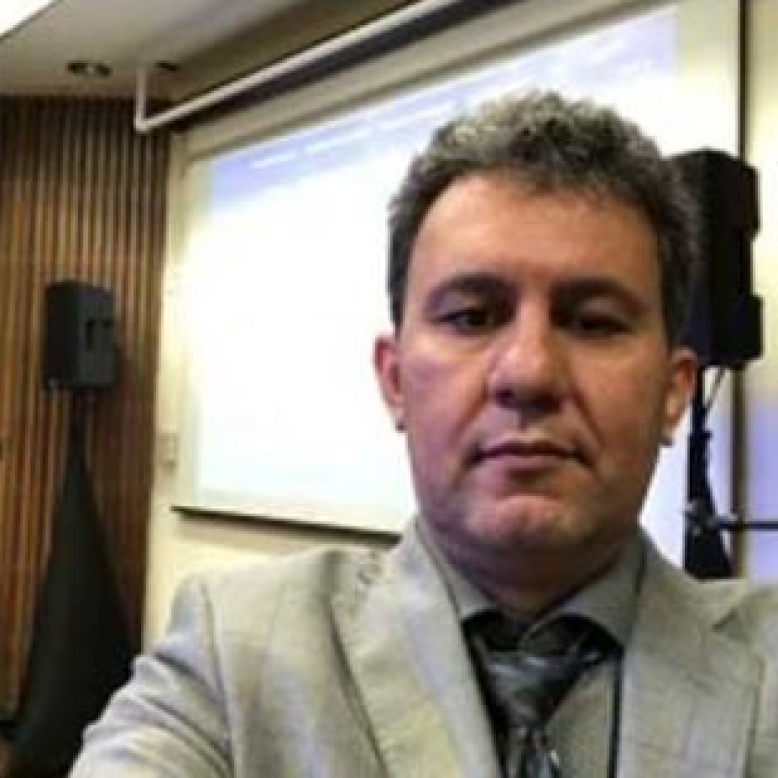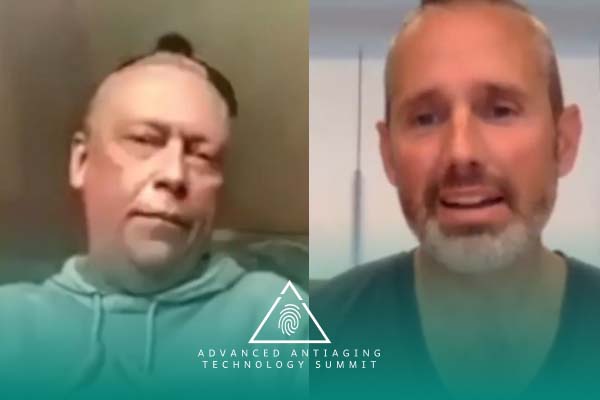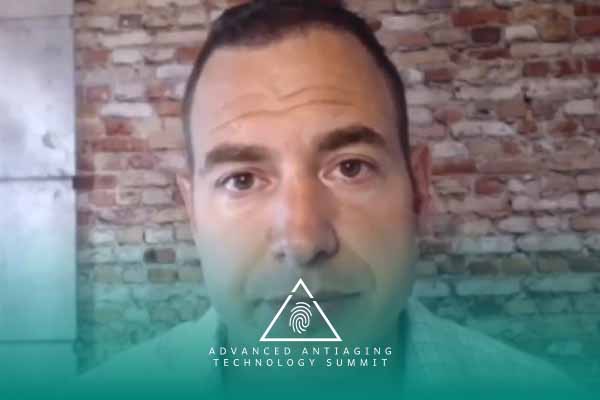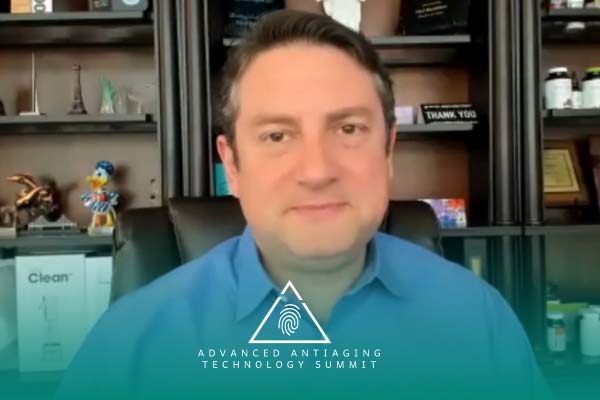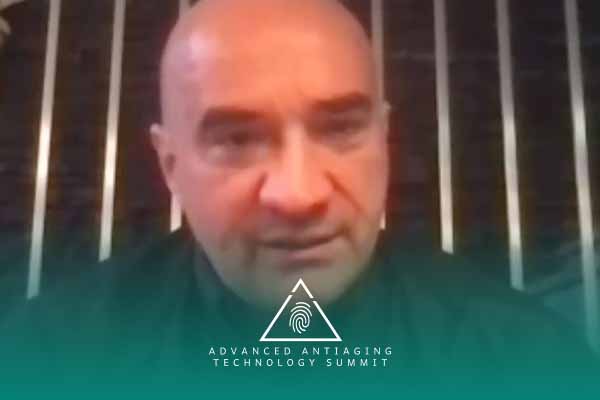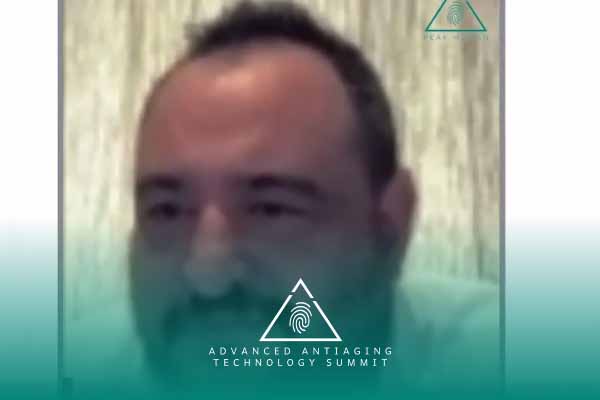Join the discussion below
Sanjeev Goel, MD, FCFP (PC), CAFCI
Hello, I’m Dr. Sanjeev Goel, and I’ll be interviewing Dr. Salaheldin Halasa today. Dr. Halasa is the Founder of Chronic Diseases Prevention and Management Centers, Academy of Oxidative Disorders, and of Nitromedicine. He has extensive clinical and research expertise in the field of immunotherapy, stem cell therapy, photodynamic therapy, photoregenerative, nanomedicine, nitroredox, and pain management. Dr. Halasa earned his medical degree in Tripoli University in Tripoli, Libya, in 1998, and passed the USMLE exams. Dr. Halasa was a researcher immunotherapy at Baylor University in Texas as a Chief Executive Officer and founder of Chronic Disease Prevention Management Centers, Academy of Oxidative Stress Disorders and Nitromedicine in Cambridge, Maryland.
Dr. Halasa has published and is a frequent guest speaker at renowned venues, such as A4M American academy of anti-aging medicine, SPIE, and ASLMS American Society for Laser Medicine and Surger, Nitric Oxide Society, FAPM Florida Academy of Pain Management, ISLA, NAALT, Boston Biolife and Photobiology Society, Academy of Stem Cell Physicians and the American Osteopathic Society of Rheumatic Diseases. His website is www.cdpmcs.com and nitrilemedicine.com. I hope you enjoy today’s talk with him. Hi everyone, I’m Dr. Sanjeev Goel, and you’re listening to the Advanced Antiaging and Technology Summit. Today, I have Dr. Salaheldin Halasa who’s going to be talking about the immune system and its impact on aging. Welcome Dr. Halasa, how are you today?
Salaheldin Halasa, M.D.
Good, good, how are you?
Sanjeev Goel, MD, FCFP (PC), CAFCI
Good. Thank you for taking the time today. Where are you in? You’re in the US right now, right?
Salaheldin Halasa, M.D.
I’m in Maryland, yes.
Sanjeev Goel, MD, FCFP (PC), CAFCI
Maryland, okay, perfect. So I guess I want to first just start, I loved your talk, you did a couple of, maybe about a month ago, for the stem cell positions where you gave this amazing overview of how the human immune system works because most people just talk immune system but don’t really, really go into the depths of it. But maybe before we even get into that, just maybe give us a background on how did you actually get involved in this aspect of medicine? Like why did you pick becoming, like really focusing your understanding or expertise on immune system?
Salaheldin Halasa, M.D.
Can I just close this phone here? Just sorry for that. Yeah. Okay. Let me just say. Okay, Dr. Mike, I have a meeting here. I’ll talk to you later. All right, here we go. Ye, yeah, no worries. Well, we started when I was doing pain management in Delaware, I was trying to really manage the root cause of the disease not just injecting them with steroids and giving them narcotics. And I have the passionate for finding why the patient has pain and find out the root pathology, a root cause of it. And you know, most of the chronic inflammatory disease or chronic disease in general, they end up with pain conditions. So that’s mean you will be involved in all different medical specialties so you can have pain from rheumatoid arthritis, you can have pain from injuries, you can have pain from cancer, you can have pain from also in the stomach, right? And so in a state of just numbing and blocking the pain, I was looking for the root cause. And we did a lot of research.
I worked with Dr. Michael Hamblin at Harvard Medical School, I published articles with him. And I was trying to convert the idea of managing pain into managing chronic diseases and the state of saying managing pain. And I did publication with Michael Hamblin, from Harvard Medical School I have two publication, 2014 and 16, and they are talking about treating chronic diseases or pain or manage pain by using stem cells and PRP and light therapy. And nitric oxide donors, antioxidants. So it’s a cocktail, it’s a protocol that combined therapies that will unlock the codes of the immune, unlock the codes of the metabolic, unlock the codes of redox, and also delivering those drugs and supplements using nano medicine because that’s the best way of targeting the pathology. And I end up opening a new company it’s called, Chronic Disease Prevention Management Centers. And we have centers all over the world.
I have 10 in the United States, covering 10 states. And then I have one in Bahamas and we’re sharing the protocols, we are managing all kinds of chronic diseases of all different medical specialties. And we welcome you to join us in Canada to become the pioneer in the Chronic Disease Prevention Management Center in California. And we are addressing the root cause of the diseases and we understand the pathophysiology, and then we build protocols that will tackle all those pathological factors that involve in the disease. And so we end up with the COVID-19 pandemic and we start looking for the way to understand it.
So we understood that this COVID-19 is hijacking the renin-angiotensin system and that is causing the immune system to be shifted to Th17 immune response, interleukin 6, over production of neutrophilia, that’s why those patients, you see they have neutrophil is high. And based on this pathophysiology, we start putting together the protocol to manage it. And we find, yes, maybe those steroids will help to suppress the immune system and help to block the overactive Th17 and over production of interleukin six. Yes, we can say that, but also if there’s a way that we can modulate the immune system instead of suppressing it with steroids, because when you do too much of steroids you suppress the whole thing, including the Th1 and then you cannot fight the virus.
And so modulating it, which means shifting it from Th17 to Th1 is the best way of managing it and inhibiting Th17 because that’s the mediate, the cytokine storm of COVID-19. So methylene blue is a good drug because it does inhibit Th17 immune response. And it does help also to block the virus, so it binds with the spike and preventing it to attach to ACE2 receptor and methylene blue also activates the Th1. It helps also to prevent the tolerance by inhibiting the PD1 signaling which is responsible for the immune tolerance. So that’s the beauty of methylene blue. And also when you have cytokine storm, you have too much of oxidation, too much of free radicals. That’s mean your iron will be oxidized, whether it’s in mitochondria or the hemoglobin and turn from ferrous to ferric. And when it turns into ferric, it will not carry the oxygen for the hemoglobin aspect. And also we have problem with electron transport chain in the mitochondria. So reducing it using a methylene blue will reduce those iron to ferrous and that help to carry the oxygen to the tissue more efficiently. So I like methylene blue to manage, use it to manage COVID-19. But of course, vitamin D is very important as well because it does block the Th17 immune response. And it does stimulate the body to secrete into their own alpha which is a natural cytokine that kills the virus.
Vitamin C the same thing, it helps to same thing like methylene blue, it helps to turn that ferric to ferrous and help to reduce it, and help to increase the carrying of the oxygen, but also vitamin C stimulate the secretion of interferon alpha from the immune system. And so quercitrin the same thing, zinc, all of them help to boost the immune system to fight the virus. But we find out methylene blue does everything from antiviral into boosting the immune system into its anti-inflammatory effect into its helping and managing the oxidative stress. So we develop a cocktail for managing COVID-19.
We have great success. We have almost 1000 scripts, throw of compounding pharmacy, and we’re doing great with managing COVID-19. So COVID-19 is under control. And then we find out that patients are seeking vaccine. Also they have problem because the vaccine produce the spikes, the spikes, those complication of the side effects. So we recommend giving the patient losartan because that would block the inflammatory arm of the RAS, which is angiotensin II, type one receptor signaling. And I think that will, I think with losartan we can definitely help to manage those side effects of the, especially the clotting, because we know that spike do activate the platelets and losartan, it has an anti-platelet effect. So throw the RA system.
Sanjeev Goel, MD, FCFP (PC), CAFCI
I’m going to interrupt you because it’s so many nuggets you have, and I just want to go a little bit more in depth for the viewers. So, one thing is you mentioned Th17 and Th1, but do you mind just quickly just saying what are the different categories of the T-cell just so people understand there were imbalance and what do the different T-cells do? And then if you can just talk a little bit about, you mentioned methylene blue. I mean, what are the dosage? Is there any toxicity? What do people, what do you kind of recommend? Because that’s not normally a medication that’s given by doctors. So I’m just curious about that.
Salaheldin Halasa, M.D.
Sure, sure. Let’s first understand the immune system how they operate. I’ll make it so simple and easy for the audience. Basically, if the macrophages encounter cells that’s infected with virus or cancer, those macrophages, when they eat them, they start secreting interferon gamma. And when they attach into the naive Th cells, they polarize the Th cells into Th1. So what they term the fate of the immune system and the polarization of the immune system is what the macrophage eats, which is the antigen presenting cells. So they eat virus, infected cells with virus or cancer, it polarize the immune system into Th1.
If the macrophages eats bacteria and fungus it polarize the immune system into Th17 because Th17 will lead to neutrophils, and the neutrophils will attack, eat the bacteria and the fungus. And if the macrophages, eats allergens or parasite antigens, then it polarize the immune system into Th2 where you start producing immunoglobulin E and pseudophilia and basophilia, because that’s the way you can get rit from the parasites which is the worms. So that’s generally the way that the immune system is handling all this different.
Sanjeev Goel, MD, FCFP (PC), CAFCI
You had one autoimmune, you had one more T-cell-
Salaheldin Halasa, M.D.
There’s another one which is the TREX, and that’s when you’re at your macrophage eats your own self cells or antigens, then they start polarizing the immune system into TREX and TREX secretes interleukin 10 transforming growth factor, and that leads to the immune tolerance. So that’s the polarization of the immune system. What does COVID-19 virus when it’s being attacked, when being attacked by this virus, so when the macrophage eats those infected cells with a COVID-19, normally, and what the response that we need, is polarization to Th1.
Because the only way you can get rid from infected cells, is by cytotoxic T-cells which is throw the Th1 polarization, right? Well, the problem with this virus is different from all other viruses, normally influenza viruses we will see the shifting into Th1, that’s the normal response. But this virus is fooling the immune system by those spikes is hijacking the renin-angiotensin, the RA system which is renin-angiotensin system. And they are blocking the ACE2 receptors which will block that anti-inflammatory arm of the RA system, allowing inflammatory arm of the RA system to be overactive, which is angiotensin II type 1 receptor signaling, that leads to activation of Th17. So it polarize the immune system to Th17 and to neutrophil, neutrophilia, which we don’t need to fight the virus. You need Th1 polarization not Th17, but the virus is hijacking and is exhausting the immune system and is pushing it to the wrong direction-
Sanjeev Goel, MD, FCFP (PC), CAFCI
It’s still inflammatory. It’s still inflammation but in the wrong way, is that what you’re saying?
Salaheldin Halasa, M.D.
It’s a wrong way that you cannot use it to fight the virus. So normally the virus, when we get infected, we polarize the immune system to Th1, but this virus is altering that by throw the RA system hijacking, and it’s turning the immune system as we are infected with bacteria and fungus and definitely the neutrophils cannot really fight the infected cells with viruses. So the virus will flourish. So that’s how the COVID-19. So understanding that, then how we can manage it, you need first to definitely look at blocking the Th17 signaling, methylene blue does that, Ivermectin does that, low dose steroids does that, anti-histamine does that too, it polarized the Th1.
So we can repurpose some drugs for that purpose, but methylene blue does even more. It also blocked the spike itself, which is good, that’s what you need, and preventing it from attaching to the ACE2 receptor. And methylene blue also, it helps to block the Th17 signaling. And it also prevent the immune tolerance by blocking the PD1 signaling. And it also helped as anti inflammatory, its antioxidants, so it definitely helped to buffer dirty ducts, it helps improve the mitochondrial function, that’s what you need to kill the virus infected cells. It also help to reduce that ferric to ferrous, that’s when you have oxidative stress and you have too much of free radicals and then you have problems with getting the oxygen because all those stress will turn into very ferric and they will not be able to deliver the oxygen to the tissue, and with that hypoxia.
So methylene blue does help that. Now, normal dose, the doses that we’re talking about methylene blue it’s for prevention, which we’re giving it for all the patients. And there’s lots of articles and publications, even companies, they’re start using methylene blue to treat cognitive problems and neuro genetic disease like Alzheimer’s. And the way it works, or the dose that we are asking for, it’s almost 10% of pharmaceutical dose. So it’s a very safe. The pharmaceutical dose is .5 mg/kg to 2 mg/kg. And yes, when you go up to 2 milligram, it gets it to the toxicity, which is serotonin syndrome. You don’t want that, right?
So we are not recommending, we are recommending 10 milligram which is almost 10% of the lowest safe pharmaceutical dose which is 0.5 milligram per kg. But when, if the patients has cytokine storm, we can go up to 50 milligram, which is still in the lower margin of the pharmaceutical dose. We are away from that toxic limit when our recommendation here. So yes, methylene blue, I do recommend it because it does have antiviral, but also it has anticancer. And that’s another topic we can talk about.
Sanjeev Goel, MD, FCFP (PC), CAFCI
Yeah, let’s just talk, let’s switch over to like talk a little bit about how you’re looking at aging and the immune system because I mean, you kind of touched on it with Alzheimer’s and the different T-cells. What exactly is happening as our immune system is aging, is one of these branches becoming more active than another? Is that how would you describe that?
Salaheldin Halasa, M.D.
Aging process. When we age, what would happen is the epigenetics, the change, the expression of the enzymes. And we find out that with aging, epigenetics that express antioxidants will be shut down with aging. While epigenetics that express pro-oxidants will stay active. So with aging, you would have more of pro-oxidant enzyme versus antioxidant enzymes. So you would have the redox it’s changing more, become more oxidative. So when we grow in age, we will be having more of oxidative enzymes versus antioxidant enzyme. So we don’t have much way to neutralize those free radicals and those free radicals they start eating us and damaging us, oxidizing us in age like rusting.
That’s what happened with aging, we are rusting, because we don’t have that protective paint, in case when you have a car, you’re painting it with some protective against oxidation. Same thing, we do have antioxidant enzyme consider that as their protection against those free radicals, it decrease with age, their expressions. Along with that nitric oxide also decrease with aging and that’s why you would have after sclerosis with aging because neutrophil cells are not producing enough of nitric oxide, why? Because the NOS, which nitric oxide synthase endothelium expression decrease with age. So the way that we can slow the aging is by stimulating the expression of those antioxidant enzyme epigenetically, and fasting is the one way of doing it. Now we fasting and Ramadan, right as a Muslims, that’s a good one.
Polyphenols does that too. Flavonoids will help to express the antioxidant enzymes, and that helps us slow the process of the aging. Methylene blue does have effect on the expressions of the epigenetics for the antioxidant, does it like polyphenols, but also to improve the mitochondrial functions, the electron transport chain by reducing the iron, and having a functional mitochondria is very important as well, because you can produce enough of NADH, NADHP, to reduce those antioxidants, those antioxidants like vitamin C, they don’t buffer dirty ducts, or they don’t really scavenge the free radicals by itself. They have to be reduced by glutathione, reduced glutathione, and reduced glutathiones it’s come from where from NADPH and NADPH comes from the NADH, which is coming from the mitochondria. So you have to have this fuel, it’s an active process to reduce those antioxidants, for those antioxidants to neutralize the free radicals.
Sanjeev Goel, MD, FCFP (PC), CAFCI
In all of these things. You need vitamin C, you need glutathione, you need NAD, is that what you’re saying?
Salaheldin Halasa, M.D.
And I need the mitochondrial function. If the mitochondria is not functioning, I give the patient antioxidants. Okay, well, antioxidants, vitamin C there’s oxidative form, and there is reduced form. You need to switch the oxidative form to reduced form in order to neutralize the free radicals. Who is going to do that? Well, the glutathione, who’s going to do the glutathione and reduce the glutathione? It’s the NADPH. Who’s gonna produce the NADPH, the NADH. And who’s gonna produce the NADH, it’s the whole trip of cycle and extracting the energy and the hydrogens from the sugar. So you need to have, it’s an active process. It’s not passive process, it’s an energy driven process. And those hydrogens that contain the high electron potential, those are the ones eventually they will be initializing those free radicals and turn into water. So it’s an active process, not passive process. So if you have mitochondria dysfunction, even if you give them vitamin C, they will not work. You cannot neutralize the free radicals because you need to reduce those.
Sanjeev Goel, MD, FCFP (PC), CAFCI
How do you address mitochondrial dysfunction? I mean, that is such a critical, we hear so much about mitochondria and how does one improve the efficiency of this energy production through mitochondria? How does that happen?
Salaheldin Halasa, M.D.
You need to supply the body with all the nutrition that increase the expression of the mitochondrial enzymes. Polyphenols, flavonoids, CoQ10, the methylene blue, all of this helps to improve the mitochondrial functions. Light therapy does help that. So basically optimizing the health, throw other integrative approach that we are doing, it’s part of it. It is improving the mitochondrial functions.
Sanjeev Goel, MD, FCFP (PC), CAFCI
Can you come a little closer to the screen, by the way, just a little closer to the screen. Sorry, that’s perfect, that’s awesome.
Salaheldin Halasa, M.D.
Okay.
Sanjeev Goel, MD, FCFP (PC), CAFCI
Yeah. And what about NAD? Like NAD IV treatments, or people are taking NR and NMN and what impact do you think that is having?
Salaheldin Halasa, M.D.
It’s the same concept the NAD, which is the precursor for NADH, and NADPH. So you’re providing the kind of resources, the components, but you still need a functional mitochondria to reduce the NAD to NADH. So functioning mitochondria is very important. And you can do that with light therapy, with polyphenols, methyls, with CoQ10, there’s many way of helping the mitochondrial function. Keto diets also helps the mitochondria to be functioning.
So yes, and all this integrative approach that we are doing, vitamin D, six hormone, all of this will definitely help to improve the mitochondrial function and improving the mitochondrial function means also slowing of the processes of the aging because the mitochondria is responsible for buffing ducts. And we find out methylene blue is the drug of choice to treat one of the hardest aging disease, which is called progeria. You know the progeria where they, you know they’re kids but they look like…
Sanjeev Goel, MD, FCFP (PC), CAFCI
They age quickly.
Salaheldin Halasa, M.D.
They age quickly. One of the way to manage those people is giving them methylene blue, because it does the most powerful anti-aging drug up to now is methylene blue. And that’s the reason we were giving it to those patients to slow the process of aging process which they have problems with their antioxidant enzymes. Some was being turned off fast and they have too much a pro-oxidants and too much of free radicals.
Sanjeev Goel, MD, FCFP (PC), CAFCI
Wow. You mentioned before stem cells and PRP and all that. And I guess you have a lot of experience in that. What do you believe is the impact of people doing like stem cell infusions and exosome infusions? And does that have an impact on the immune system and aging?
Salaheldin Halasa, M.D.
Yeah, so basically stem cells and PRP, they are very rich with antioxidant enzymes and active inflammatory cytokines. And definitely they help to balance that redox enzymes where you have more of antioxidant enzymes. It also, they have anti-inflammatory cytokines which will balance the inflammatory cytokines. So basically your with the factors those platelets and the stem cells have. They help to balance your immune system by producing anti-inflammatory cytokines and expressing anti-inflammatory cytokines which will balance the inflammatory cytokines and also producing antioxidant enzymes which will balance the pro-oxidants. So definitely helped to slow the progression of the chronic disease.
But it’s when you’re giving genetic material, you’ll be expressing the enzymes, you get more long effect than just giving antioxidants. So you are giving the enzymes or the genetic material to produce enzymes of antioxidants, not just giving vitamin C, which is a chemical that you’d need to have an active enzymes in order to reduce those vitamin C and for them to function. So I’m a believer of stem cells, it definitely help to slow the progression of chronic diseases. Whether it is the aging or it is the inflammatory diseases.
Sanjeev Goel, MD, FCFP (PC), CAFCI
And through your clinics, I think you’re pioneering a whole new form of medicine using nano medicine through the develop, I mean, I think treatment of other types of treatments I believe like platelet derived medicines or can you just explain me a little bit of what is this?
Salaheldin Halasa, M.D.
So yeah, so one of the problems that we have when we are managing chronic diseases, we’re giving drugs and supplements that goes everywhere, we call it naked therapy. And so let’s say if I have a cancer and I give chemotherapy, it will go both to the cancer and to the healthy tissue, it goes damage to the healthy tissue and damage to the immune system. And so we are looking for the way to when we’re giving drugs that we need this drug to go to the pathology, not to the healthy tissue that is damaged.
We’re looking for a way that we can carry those drugs and supplement to the pathology. So how we can find that way is knowing exactly the pathology versus healthy tissue. What’s the difference between them. And we find out the blood vessels of the pathology is more leaky than the healthy. And leaky of what? They are more leaky to the nano-sized particles versus the healthy ones. So if I have nano size particle, and have pathology versus healthy, we will see the nanoparticles will be seeped into the blood vessels of the pathology, because they’re wide open for them.
But the healthy tissue is tight, they don’t allow those nanoparticles to move. So here we understand, okay, so if I put the drug into the nano, then this taxi or this vehicle will carry those drugs and supplements into the pathology and spare the healthy tissue. Doing that, we called target therapy. And so all this cancer therapy now, we are nanoing them, all those antibiotics, we can nano it because nanoing not just, it gets into the pathology only, but also the nano helps to stick into the pathological surfaces. And the best nano particle is the platelet derived with exosomes.
They already have natural receptors on them that will be targeting the pathology, whether it’s inflammasomes, senescent cells, bacteria, virus, or cancer cells, they have a tendency to attach to those pathology. And so the best nano particle is derive it from the platelets. It’s better than phospholipids, PLGA, and all the synthetic nanos. And now with our clinics, we are really producing nanoparticles, delivery carrying particles, from the platelets, using sonication and nanofiltration at the clinical level. And all our injectable is target into the pathodology. So you don’t need that much of drug. You just need 10% of it, and you can get the efficacy even better than the naked one, because you are targeting those drugs into the pathology.
Sanjeev Goel, MD, FCFP (PC), CAFCI
Can any type of medication be put into a platelet derived exosome?
Salaheldin Halasa, M.D.
Yes.
Sanjeev Goel, MD, FCFP (PC), CAFCI
Like even methylene blue, like for example, methylene blue?
Salaheldin Halasa, M.D.
Of course, methylene blue, ICG, steroids, cancer drugs, antibiotics, not just that. Let’s say you have infection. And that bug has multi-resistance to all the antibiotics let’s say it’s resistant to Rocephin. If I put this Rocephin in nanoparticle, I break that resistance. You got my point? So it’s not just that can also break the resistance of the antibiotic, you can also break the resistance for cancers as well. So those gaps…
Sanjeev Goel, MD, FCFP (PC), CAFCI
Sounds like completely, this sounds like super revolutionary. I’m just surprised that why is this not being done everywhere? If it’s like, you’re saying that this is a whole new way of delivery of medications targeted, this would change, this changes the whole game as far as I’m concerned.
Salaheldin Halasa, M.D.
They are, we are doing it. The big pharma is moving doxorubicin into Doxil and nanoing it. The problem with synthetic nanoparticle, there’s a problem with it. So let’s say you have a tumor in the brain and you’d give Doxil. Doxil is phospholipid bi-layer and PLGA possibly. So what would happen is yes, this nano Doxil has tendency to reach into the pathology to the leaky blood vessel of the pathology and seeps through and spare the healthy tissues. But the problem is the macrophages in the liver recognize this nano physical synthetic one is foreign, and they start eating them. So if you are subjecting into thinking to deliver to the pathology of the brain, that cancer in the brain, the problem is the liver was going to filter them and kind of hindering them from reaching into the target.
While if you do it with platelet derived exosomes, it’s like a Trojan, and your macrophage will not recognize the platelet’s nanoparticles, because it’s coming from the own patient’s blood and you can get better targeting without being hindered by the macrophages. So the big pharma moving to that direction, but as the clinicians, we can do better job if we nano it using the autologous blood of the patients’ platelets. And there was a study where they made a study where you have doxorubicin versus Doxil which is a phospholipid synthetic nanoparticle versus platelet derived exosome loaded with doxorubicin. And they find the efficacy of platelet derived and nanoparticle loaded with doxorubicin exceed the efficacy of the Doxil and doxorubicin.
Sanjeev Goel, MD, FCFP (PC), CAFCI
Wow. Let’s say if one is getting the type of treatment do they need to take their blood regularly and have it created, or is it the once you create this medication for them using their own platelets, then you have enough for some time. How does that work?
Salaheldin Halasa, M.D.
That’s in clinical situation, you have to do it per procedure per time. You cannot really, even if you store it, you can only store it for one month. The reason because they are not stable eventually they will precipitate, they stick together. So you need to sonicate it, nanofilter it again when you’re trying to reuse it. But I will not recommend storage this thing because you need to use it. And simply just because of the regulatories reasons and the stability is not there. You can have it for one month, but after one month, it may precipitate and all that stuff. So that’s difference between synthetic and big pharma, they are using vIGA and then wrap it with platelet nanoparticles and that gives some sort of stability. But as clinicians, we don’t need that step so we can make it even more easy. But it has to be used the time you make it, which is a good thing.
Sanjeev Goel, MD, FCFP (PC), CAFCI
And so for this chronic disease centers, is this a part of the treatment like is this using this type of therapy…
Salaheldin Halasa, M.D.
Oh yeah, so we are considering nanomedicine in our treatments so we can get the target therapy there. We are considering all the protocols that we are recommending, whether it is redox, immune modulation, metabolic coach, and manage the metabolism of the body, if there’s any errors, we need to fix it as a comprehensive health optimization or managing chronic disease. So we still use all the mainstream medicine but we use it in an efficient way and effective way. And also we use integrative regenerative along with that as a combination. So we’re not integrative regenative savvies where they deny everything in the mainstream medicine, or we’re not the mainstream medicine where they deny everything that integrated regenerative medicine is doing. We’re trying to take the best of both and come up with a protocol that really have an understanding of the pathology and the root cause of the disease and showing all the mechanism along with publications and researchers that support those protocols that we are putting it together as a team of doctors.
Sanjeev Goel, MD, FCFP (PC), CAFCI
Well, that’s really amazing. So for the viewers, if they want to know more about the work you’re doing, where should they go? Like if they want to learn about these clinics or go to become a patient, how should they do that?
Salaheldin Halasa, M.D.
So yeah, just visit website cdpmcs.com which is Chronic Disease Prevention Management Center, cdpmcs.com. And definitely we have 10 clinics now in United States, one in Bahamas, and we are growing, and we’re looking for more, we’re looking for Canadian doctors to be joining us. Again, we are doing everything that is compliance. We are trying our best to line up with the regulatories so that we are in a very peace of mind. We don’t do things that’s not supported by researches and clinical trials. So everything we do does have a supports of research and articles and clinical studies. And we’re doing all the cutting edge in the frontier of medicine. Yes.
Sanjeev Goel, MD, FCFP (PC), CAFCI
Really exciting. Thank you so much, Dr. Halasa. I really appreciate your time. Thank you.
Salaheldin Halasa, M.D.
Thank you.




